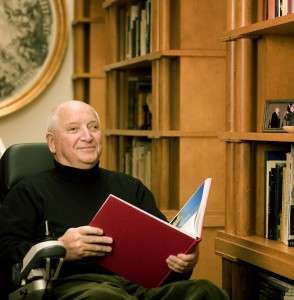
Architects have a love-hate relationship with fashion. On the one hand, becoming fashionable can catapult an architect’s career, bringing not only recognition but also, more importantly, commissions. But fashion giveth, and fashion taketh away, and becoming unfashionable can stop a career in its tracks. Philip Johnson, always with one finger to the winds of fashion, dealt with its fickleness by embracing it: moving from Miesian modernism, to ersatz classicism, to postmodernism, to deconstructivism. See his compound—architectural zoo?—at New Canaan. But most architects have deeper convictions than Johnson, even when fashion abandons them. Steadfastness can lead to obscurity, as it did to Paul Rudolph, or it can be rewarded, as in the case of I. M. Pei, who remained a modernist throughout the postmodern and deconstructivist periods, and lived long enough to see his steadiness vindicated. Michael Graves, similarly has stuck to his guns. Catching the brass ring during the heady days of postmodernism, he never abandoned his personal style—a stylized version of classicism—despite the general opprobrium with which postmodernism was dismissed by the critics and the academy. Graves has just been awarded the 2012 Driehaus Prize.
Full disclosure: I am a member of the Driehaus Prize jury.
